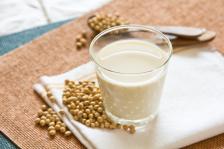Is Textured Soy Protein a Healthy Food?
Texturized soy protein is used to make all kinds of vegetarian-friendly meat substitutes. But is it a healthy choice?
Monica Reinagel, MS, LD/N, CNS
Q. “I recently bought some textured soy protein, since it seemed pretty healthy. But I’ve since read some articles stating that textured soy protein is not as healthy as it seems. Could you please provide your input? I’d like to include it in my diet if it is not too unhealthy.”
Answer. Like many foods that make our lives more convenient, textured soy protein (also known as texturized vegetable protein or TVP) is a mixed bag.
What’s Good About TVP?
On the plus side, TVP is an inexpensive and relatively concentrated source of complete, plant-based protein. It’s made from the part of the soybean that’s left over when the beans are processed into soybean oil. When rehydrated, TVP has a texture like cooked ground beef, which makes it very popular as a vegetarian meat substitute. Food manufacturers use textured soy protein to produce veggie bacon, chicken nuggets, soy-burgers, and so on. You can also useTVP in chili or to make a vegetarian Bolognese sauce for your spaghetti.
See also: How to Make Spaghetti Squash
What’s Bad About TVP?
On the other hand, there’s no denying the fact that TVP is a highly processed food.
Although it’s quite high in protein, a lot of the other valuable nutrients in soybeans, such as their isoflavones, are lost or altered during processing. At the same time, pesticide residues and other contaminants can be concentrated during processing, and other chemicals are added to aid extraction. That doesn’t mean eating TVP is going to kill you, though.
See also: Are your Veggie Burgers Toxic?
How Much Soy Is Too Much?

Does TVP Fit into a Healthy Diet?
Here’s the bottom line on TVP and foods made with it: Although I don’t think it’s necessary to completely avoid processed foods or soy products, both are best consumed in moderation. Occasionally enjoying some TVP as a protein source or meat substitute is perfectly fine.
As a rule of thumb, I recommend no more than 2-3 servings of soy per day. And if 80% of your diet were made up of minimally processed foods, I wouldn’t be too worried about the other 20%!
See also: Processed Foods: How Much Is Too Much?

